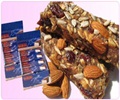A new study reveals that pre school children were more influenced by the brand imaging of the like food rather than its taste. The children preferred the McDonald food rather than the same food packed in an unbranded packaging. Children above the age of 2 already have preference to particular brands as they can recognize brands and associate them with products.
The food and beverage industries spend more than $10 billion per year marketing food products targeting mainly the children. This market has majorly grown over the years in the United States. This report is published in the August issue of Archives of Pediatrics & Adolescent Medicine, one of the JAMA/Archives journals.In a study by Thomas N. Robinson, M.D., M.P.H., Stanford University School of Medicine, California, and colleagues, preschoolers age 3 to 5 tasted five pairs of identical foods and beverages in basic McDonald’s packaging and in matched but unbranded packaging.
The foods and beverages were: one-quarter of a McDonald’s hamburger, a Chicken McNugget, McDonald’s french fries, about three ounces of 1 percent fat milk (or apple juice for one child who was not allowed to drink milk) and two baby carrots. Parents completed a questionnaire including their child’s race/ethnicity, age, exposure to McDonald’s food and toys and television viewing habits.
A total of 63 children completed the study and performed a total of 304 individual tasting comparisons. On average, children preferred the tastes of foods and drinks in the McDonald’s packaging over the same foods in unmarked packaging (48.3 percent vs. 36.7 percent for hamburgers, 59 percent vs. 18 percent for chicken nuggets, 76.7 percent vs. 13.3 percent for french fries, 61.3 percent vs. 21 percent for milk or apple juice and 54.1 percent vs. 23 percent for carrots).
A secondary analysis found that children preferred the tastes of foods and drinks that were thought to be from McDonald’s for four out of five comparisons. Preschoolers with more television sets in their homes and children who ate McDonald’s food more often were more likely to prefer foods and drinks they thought were from McDonald’s.
“These results add evidence to support recommendations to regulate or ban advertising or marketing of high-calorie, low-nutrient foods and beverages, or all marketing, that is directed to young children,” the authors write. “Our findings also suggest a need for research on marketing in general, and branding in particular, as strategies to promote more healthful taste preferences and food and beverage choices in young children.”
Advertisement
Source-Eurekalert
BIN/J











